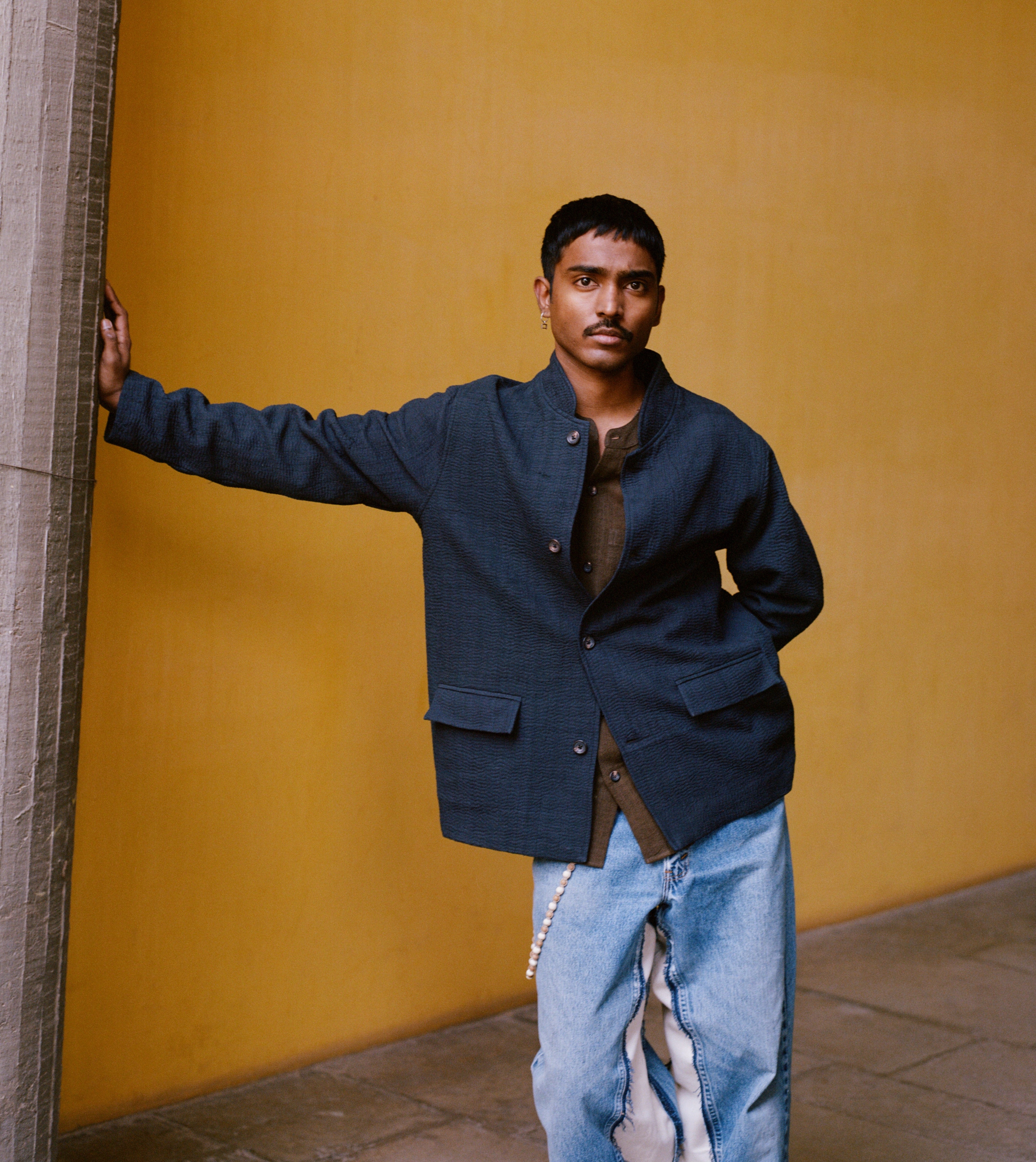
FW25 AMDAVAD
What does the future of Indian aesthetics look like? Through this journey of running the brand for eight seasons now, I’ve observed the narrative around Indian craft change. Initially, it seemed like there was a lot of excitement that clothes can still be made like this. India is one of the last places where you have access to techniques like kantha and Zardozi at scale. Maybe leaning into these Western demands, the art direction around the clothes felt like it was pandering to a certain audience. Not to get too inside baseball, but the narrative around Indian craft felt to me like it was being shaped by poorly researched imagery that either romanticized poverty or referenced Maharajas and pre-colonial opulence. The interpretations felt a little narrow and the idea of exploring specific movements or subcultures felt absent. So this time, we decided to invest our time and effort in creating a 100 page photo book: “Amdavad” which we shot with Jeremy Everett and Julie Ragolia this December. We shot the clothes in Ahmedabad, at the ATMA building designed by Le Corbusier and his mentee B.V. Doshi. We also shot at Doshi’s surrealist art gallery project with Indian modernist painter M.F Husain, where the concrete gallery walls are cast in these dome shaped caves.These buildings, and the Indian modernist movement were a rejection of nostalgia and sentimentality. However, crucially they also looked at craftsmanship and technical knowledge as a generative idea. The materials, the natural cooling mechanisms within the architecture and the color scheme were all entirely cognizant of their environment. So, for the clothes this season, my focus was how do we expand the view of what Indian craft can be. It doesn’t need to be limited to ornamental pieces for special occasions. It can be used to create a more a contemporary wardrobe with the same humanness that is imbued in the way we work.
and the color scheme were all entirely cognizant of their environment. So, for the clothes this season, my focus was how do we expand the view of what Indian craft can be. It doesn’t need to be limited to ornamental pieces for special occasions. It can be used to create a more a contemporary wardrobe with the same humanness that is imbued in the way we work.






















